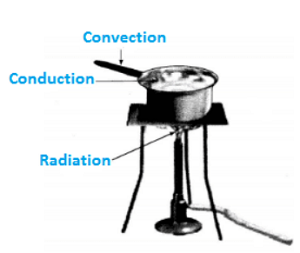
NCERT Solutions for Class 7 Science Chapter 4
NCERT Solutions for Class 7 Science Chapter 4: This page consist of details solution of chapter Heat class 7 science . You can check NCERT Solutions for class 7 Science for other chapters of class 7 science prepared by Physics Wallah. do the questions by yourself and check your solution with Physics Wallah NCERT solution for the chapter Heat. to have more depth in chapter Heat class 7 science you must read the theory of Heat and do the additional question of Physics Wallah click this link to do the questions and read theory of Heat. along with NCERT solution of class 7 science.
CBSE Board Exam Centre List 2024
NCERT Solutions for Class 7 Science Chapter 4 Heat Overview
These crucial subjects are covered in NCERT Solutions Class 7 Science Chapter 4. To grasp the concepts presented in the chapter and effectively utilize the provided solutions, students are encouraged to carefully study each topic. The instructors at Physics Wallah have dedicatedly created these solutions to enhance comprehension of the chapter’s ideas. The intention is for students to effortlessly achieve high exam scores after reviewing and practicing these solutions.NCERT Solutions for Class 7 Science Chapter 4 Heat
While solving science specifically for class 7 you need lots of resource to excel in class 7 science to give you edge Physics Wallah uploaded additional questions of class 7 science for solid foundation of class 7 science , Academic team of Physics Wallah uploaded detail theory of class 7 science with added additional Notes & Questions.
NCERT Solutions for Class 7 Science Chapter 4 Exercise 1
Question 1: State the similarities and differences between a clinical thermometer and a laboratory thermometer .
Answer: Similarities between the laboratory thermometer and the clinical thermometer
- Laboratory thermometer and the clinical thermometer thermometers consist of long narrow uniform glass tubes.
- Laboratory thermometer and the clinical thermometer have a bulb at one end.
- Laboratory thermometer and the clinical thermometer contain mercury in the bulb.
- Laboratory thermometer and the clinical thermometer use Celsius scale on the glass tube.
Differences between the laboratory thermometer and the clinical thermometer:
A clinical thermometer reads temperature 35°C to 45°C while the range of laboratory thermometer is -10°C to 110°C.
The clinical thermometer has a kink near the bulb while there is no kink in the laboratory thermometer. Due to kink, mercury does not fall down on its own in clinical thermometer.

Question2: Give two examples each of insulators and conductors of heat.
Answer:
Conductors – silver, copper
Insulators – rubber, plastic.
Question3: Complete the sentence with appropriate answers:
1.____________ can determine an object’s hotness.
2.___________ Thermometer cannot be used to measure the temperature present in boiling water.
3.__________ Degree is used to measure temperature.
4.___________ requires no medium for heat transfer for the process.
5.An ice-cold steel fork is dipped into a mug of hot water. The transfer of heat to the other end is by the process of ___________.
6.____________ Color clothes absorb heat better than clothes of light colors.
Answers:
1. Temperature can determine the object hotness .
2.Clinical Thermometer cannot be used to measure the temperature of boiling water.
3.Celsius Degree is used to measure temperature.
4.Radiation requires no medium for heat transfer for the process
5. An ice-cold steel fork is dipped into a mug of hot water. Transfer of heat to the other end is by the process of conduction.
6.Dark Color clothes absorb heat better than clothes of light colors.
| CBSE Syllabus Class 7 | |
| CBSE Class 7 English Syllabus | CBSE Class 7 Math Syllabus |
| CBSE Class 7 Social Science Syllabus | CBSE Class 7 Science Syllabus |
Question 4: Match the following:
| 1. Land breeze blows during | (a) day |
| 2. Sea breeze blows during | (b) summer |
| 3. Dark colored clothes are preferred during | (c) night |
| 4. Light colored clothes are preferred during | (d) winter |
Answers:
| 1. Land breeze blows during | (c) night |
| 2. Sea breeze blows during | (a) day |
| 3. Dark colored clothes are preferred during | (d) winter |
| 4. Light colored clothes are preferred during | (b) summer |
Question5: Wearing more layers of clothes during winter keeps us warmer than wearing only one thick piece of clothing. Discuss why.
Answer: More layers of clothing actually keep us warmer in winters as they have a lot of space between them. That space gets filled up with air. Air is a bad conductor; it does not allow the body heat to escape out.
Question6: Mark the places in which the heat is being transferred by convection, conduction and by radiation.
Answer:

Question7: Explain why buildings in the places that have hotter climate are advised to paint the outer walls white.
Answer: Since the white color reflects heat, it helps the house to not get heated up so much.
Question8: When a liter of water at 50°C is mixed with another liter of water at 30°C what will be the temperature of the mixture?
(1) 80°C
(2) lesser than 80°C but greater than 50°C
(3) 20°C
(4) Between 50°C and 30°C
Answer: (4) Between 50°C and 30°C
Question9: In a mug that contains water at 40°C, an iron ball which is 40°C is dropped. Mention the flow of heat:
1.Flow from the iron ball to water.
2.Will not flow from water to iron ball or from iron ball to water.
3.Will flow from the water to the iron ball.
4.Both the temperatures increase.
Answer: (2) Will not flow from water to iron ball or from iron ball to water.
Question10: A wooden fork is dipped in a bowl of ice-cold water and its other end:
1.Becomes cold due to the process of convection
2.becomes cold due to the process of radiation
3.becomes cold due to the process of conduction
4.Doesn’t become cold.
Answer:
(4) Doesn’t become cold.
Question 11: Why stainless steel pans that we use at home is are provided with copper bottoms? The reason might be:
1.Such type of pans appear to be colorful
2.Copper is a much better conductor of heat than that of stainless steel.
3.Copper is much easier to clean after use when compared to that stainless steel
4.Copper bottoms in pans are more durable.
Answer:
(2) Copper is a much better conductor of heat than that of stainless steel.
Extended Learning—Activities and Projects
Question 1: Go to a doctor or your nearest health centre. Observe the doctor taking temperature of patients. Enquire:
Answer:
- why she dips the thermometer in a liquid before use.
- whey the thermometer is kept under the tongue.
- whether the body temperature can be measured by keeping the thermometer at some place other than the mouth.
- whether the temperature of different parts of the body is the same or different.
You can add more questions which come to your mind.
Question 2: Go to a veterinary doctor (a doctor treats animals). Discuss and find out the normal temperature of domestic animals and birds.
Answer: The normal temperature of domestic animals and birds are recorded as follows:
The normal temperature of Goat varies from 37 0 - 40 0 C.
The normal temperature of a dog is about 38.3 0 C
The normal temperature of a pigeon (bird) is 40 0 C.
The normal temperature of a cat is 38 0 C
Question 3: Wrap a thin paper strip tightly around an iron rod. Try to burn the paper with candle while rotating the iron rod continuously. Does it burn? Explain your observation.
Answer: The paper will not be burnt while rotating the iron rod continuously because iron being a good conductor of heat, allow heat to pass through them. As a result heat is taken away from the paper and the paper doesn’t burn.
Question 4:Take a sheet of paper. Draw a spiral on it as shown in the Fig. 4.14. Cut out the paper along the line. Suspend the paper as shown in Fig. 4.14 above a lighted candle. Observe what happens. Think of an explanation.

Answer: When the spiral paper is suspended at flame, then the paper spiral will keep moving because due to convection process, there will be transfer of heat and the air present above the flame will move up which results in movement of paper spiral.
Question 5: Take two similar transparent glasses of bottles having wide mouths. Put a few crystals of potassium permanganate or pour a few drops of ink in the bottle. Fill this bottle with hot water. Fill the other bottle with cold water. Cover the cold water bottle with a thick piece of paper such as a post card. Press the post card firmly with one hand and hold the bottle with the other hand. Invert the bottle and place it on top of the hot water bottle. Hold both the bottles firmly. Ask some other person to pull the post card. Observe what happens. Explain.
Answer: When the card will be removed, then due to diffusion process there will be movement of colored hot water in upward direction and cold water in downward direction. It happened because hot fluid i.e. hot water is lighter than the cold water.
NCERT Solutions for class 7 Science Chapter 4 FAQs
Define heat.
What is the difference between temperature and heat?
Explain the concept of conduction in terms of heat transfer.
Differentiate between conductors and insulators.
Explain the concept of convection.








